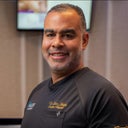I am 25 years old, I am 5"10 tall and weigh approximately 160 lbs. I have currently a 36 c cup size breast with a width measuring to be 13cm. My surgeon advises 560cc but I want to get a second opinion if possible. My main concern is that I will have too big of breasts. I want to have full d cup size breasts but googling has brought concern as to what size breasts I can expect with 560cc. Any recommendations or advice would be great.
Answers (11)
From board-certified doctors and trusted medical professionals
Dr. Donovan Rosas, MD

Dr. Donovan Rosas, MD
Board Certified Plastic Surgeon
Answer
Dr. Daniel Barrett, MD

Dr. Daniel Barrett, MD
Board Certified Plastic Surgeon
Answer
Dr. Gary M. Horndeski, MD

Dr. Gary M. Horndeski, MD
Board Certified Plastic Surgeon
Answer
Dr. Robert H. Hunsaker, MD
Dr. Robert H. Hunsaker, MD
Board Certified Plastic Surgeon
Answer
Dr. Tom J. Pousti, MD
Dr. Tom J. Pousti, MD
Board Certified Plastic Surgeon
Answer
Dr. David Finkle, MD
Dr. David Finkle, MD
Board Certified Plastic Surgeon
Answer
Dr. Robert Singer, MD
Dr. Robert Singer, MD
Board Certified Plastic Surgeon
Answer
Dr. Ralph R. Garramone, MD
Dr. Ralph R. Garramone, MD
Board Certified Plastic Surgeon
Answer
More Breast Implants Questions
See all Breast Implants Q&AWE SEND PRETTY
EMAILS
What’s trending? Who’s turning heads? Which TikTok myths need busting? We’ve got you. No fluff, no gatekeeping—just real talk. Get our free, unfiltered newsletter.
